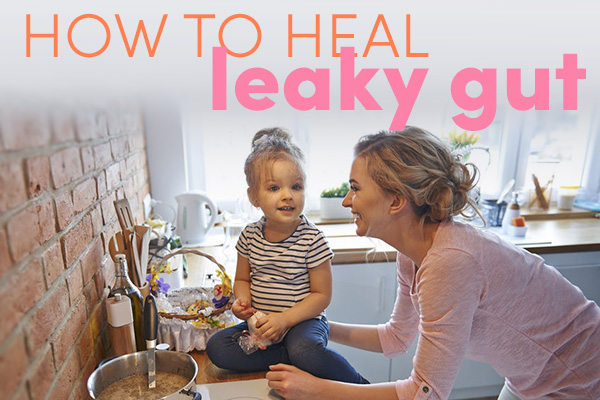
In our last post about gut healing, Jennifer explained why you may need a gut healing diet – even if you don't have digestive problems. Here she walks us through the basics of how to heal leaky gut. ~Emily
Oy! So many health conditions seem hopeless, just the emotional drag of it all is enough overwhelm. AMIRIGHT? Things like chronic fatigue syndrome, migraines, eczema, asthma, rheumatoid arthritis. The medical community gives some support – but if you want a sustainable change, not enough.
Good news is that food contains (really) all the healing mojo you need to feel awesome. By healing the digestive tract – even if you don't have symptoms of digestive problems per se – there is hope. Hurrah!
Be patient and persistent. And love yourself during the process. Gut healing diets do work.
How to heal leaky gut
#1 – Take out one food at a time
Most healing diets do not allow grains so this would be a good food to eliminate first. If you want to slow it down even more, take out gluten first and then later on remove all grains or remove one grain at a time. Other commonly offending food groups are dairy, corn, nuts, seafood and eggs.
#2 – Consume homemade broth on a daily basis
Bone broth has lots of collagen and gelatin in it from the bones and it coats the intestines and heals up the lining.
Continued use of broth will help to protect that lining and seal it against further damage if a gut healing diet is followed. This will improve the atmosphere for the beneficial gut bacteria. If you have trouble with broth, gelatin or collagen can be added in other ways.
Read more about using collagen for health and beauty in this post.
#3 – Eat probiotics daily
Fermented food and drinks contain probiotics that will support the beneficial bacteria in your digestive tract.
Here's a short list of fermented foods you can begin making right away.
Drinks include kombucha, water kefir, milk kefir, and ginger bug drinks. Foods include fermented foods like sauerkraut, kimchi, fermented pickles, and most other vegetables that have been prepared in the traditional manner of fermentation.
If making your own ferments is a wee bit scary, start with a high quality probiotic, like this one.
#4 – Find a support system
It can be very challenging to go through radical changes in your diet. There are many great groups on social media with folks who have done or are doing the diet that you choose. They can be very helpful with information and support when you struggle.
Try searching with a familiar hashtag. My favorite support hashtag? #realplans 😉
#5 – Be patient
It is not easy to make the kind of changes needed to heal leaky gut. It takes time, sometimes quite a bit of time. Often there can be a feeling of two steps forward, one step backward.
Figure out ways to set yourself up for success for the long haul. There's a good chance you'll never go back to a standard American diet.
Specific diets for gut healing
Most of the diets out there that bring true healing are some variation of these three. You can also work out your own variation of these options if you like, as you learn to listen to your own body.
The GAPS diet
The GAPS diet is the healing diet that my family has had personal experience with. It was developed by Dr. Natasha Campbell-McBride to heal her son with autistic symptoms. GAPS stands for “Gut and Psychology Syndrome” because of her observation of the connection between the gut and brain health.
The GAPS diet is designed to heal and seal the gut so that gut problems are resolved and the body heals and stays well. The GAPS diet removes all grains, sweeteners (except honey), potatoes, and some dairy. It has seven stages starting with Intro Stage 1 through Intro Stage 6 and then Full GAPS.
This is an elimination diet where in the Intro stages all food is removed except boiled meat and vegetables in homemade broth. Then slowly foods are added back in at a pace the body can tolerate, starting with egg yolks, and then egg whites and avocado and on to fruits and the full list of foods allowed on Full GAPS.
The big emphasis is on homemade broth to heal the intestinal lining, fermented foods and probiotics to encourage beneficial bacteria, and the removal of sugars, grains, and starches that feed the destructive bacteria. Another important aspect includes detoxifying baths with epsom salts.
Paleo diet or Whole30
The paleo diet encourages eating protein, fruits and vegetables of all kinds, healthy fats from nuts, seeds, avocados, olive oil, fish oil, and grass fed and pastured meat. Grains, legumes, sugar and dairy are not part of this diet.
Many recipes that are paleo are also acceptable on the GAPS diet. Unlike the GAPS diet, it is not an elimination diet where foods are added back into the diet in a certain order. However, if you start with Whole30, then you may want to try adding in foods after thirty day and as you begin to feel better.
Often making these simple changes are enough to bring healing to your body, because all the foods removed are so hard for the gut to digest. When the grains, legumes, sugar, and dairy are gone, the body is often able to heal the damage done by these foods, if it is not too serious. Longer term damage often will only heal with the GAPS diet or the paleo Autoimmune Protocol diet.
Paleo autoimmune protocol diet
Also known as AIP, this diet plan is a specific application of the paleo diet that is designed to heal inflammation in the gut and take it to the next level. Auto-immune diseases are rooted in poor gut health. Often addressing this issue with a serious commitment to AIP can yield significant healing and a remission of the autoimmune disease.
AIP starts with lots and lots of veggies, 6-14 cups per day, at the base. Organ meats, fermented foods, bone broth, and wild caught seafood are the next essential items of the AIP diet. Then, add in quality pastured meats. Healthy fats like lard, tallow, coconut oil, red palm oil, and olive oil are also important. And then in smaller amounts you can have fruit and AIP legal treats.
The following foods are removed permanently: Processed food emulsifiers and thickeners (guar gum, carrageenan, etc.), refined oils, refined sugars, grains (including corn), dried legumes (including soy and peanuts) and stevia (and other non-nutritive sweeteners).
Then these foods are removed for a minimum of 30 days and reintroduced carefully and slowly to determine if there is a problem with the food: eggs, dairy, nuts (including nut-based oils and spices), seeds (including coffee, cocoa and seed-based oils and spices), nightshades (both vegetables and spices), fresh legumes (green beans and green peas), alcohol, fruit-based and seed-based spices. (source)
Why gut healing diets fail
Sometimes as hard as we try we fail at our attempts to make changes in our diet.
- No support from family and friends.
- Significant stress in your life that does not allow you the time, energy, or money needed to make the changes for a gut healing diet.
- A lack of energy to change because your health is so poor and you feel so bad.
- Trying to change too quickly or trying to change too much at once.
- Discouragement because you do not see the changes you want in the time frame you want.
The most critical element to your success in a gut healing diet is a strong support system and patience to see true changes and results.
Now that you know how to heal leaky gut, it's time to get started! #yougotthis Go gently and work towards healing in small steps or big ones – finding the best pace to suit you and your family.
Need a lil help on your gut healing journey?
Try Real Plans!
Jennifer is a happily married homeschooling mother of 4 who lives in a small town in Pennsylvania. She blogs at The Entwife's Journal and at Purposeful Nutrition. She is also an RN who is working to build a health business through blogging, speaking, and health coaching.




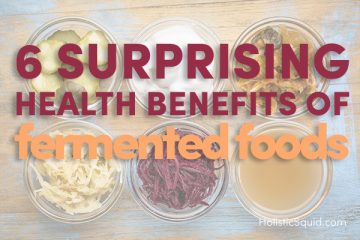
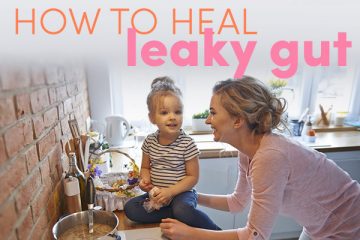

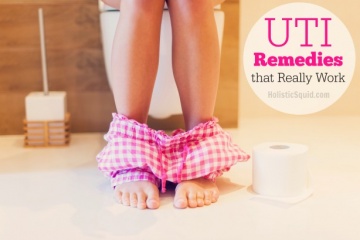
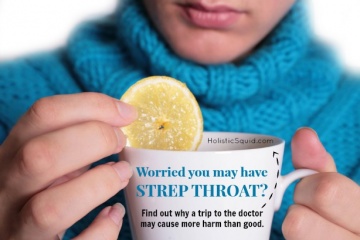
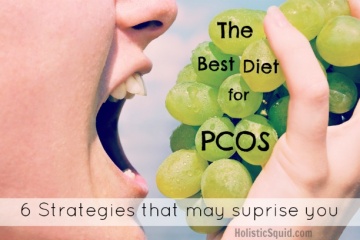
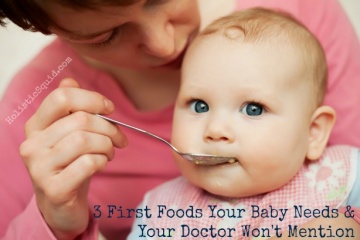
Leave a Reply